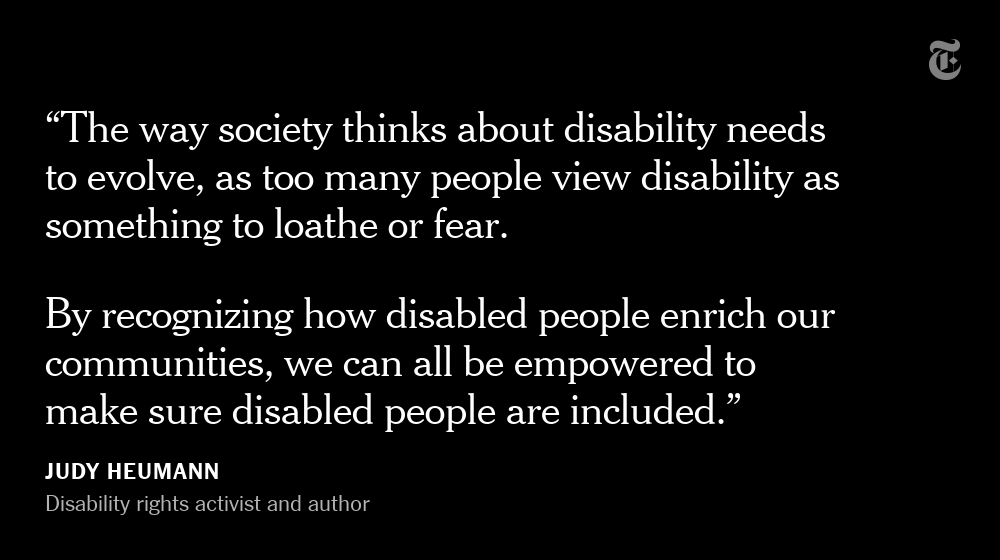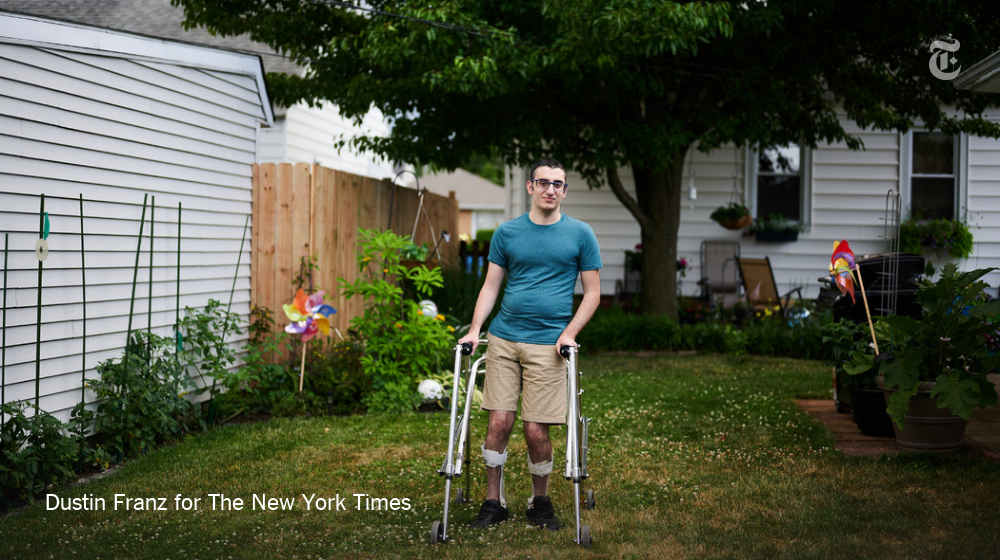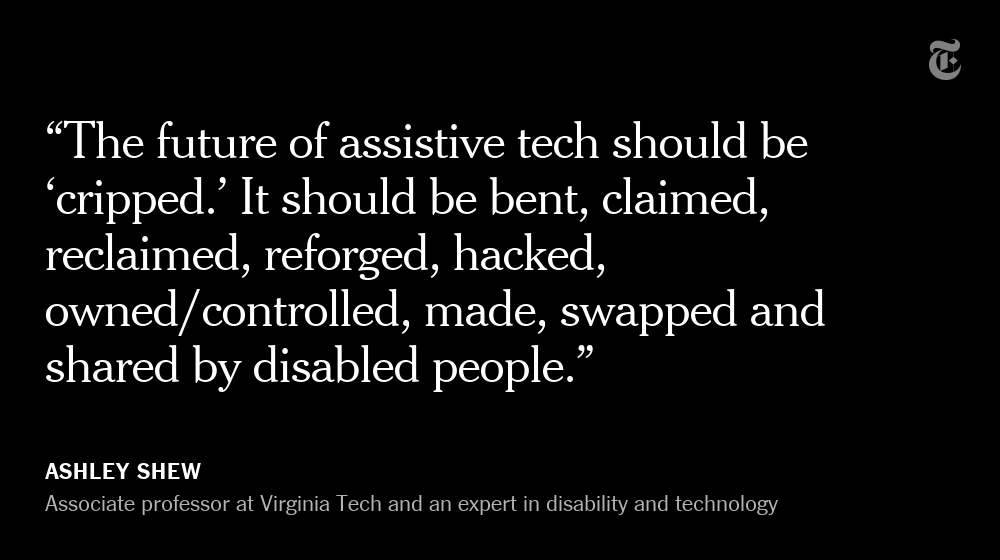Today is the 30th anniversary of the passage of the Americans With Disabilities Act, a landmark law secured after years of activism.
Our series explores the history of the disability rights movement and what it means to live with a disability in America. https://nyti.ms/39rmlzY ">https://nyti.ms/39rmlzY&q...
Our series explores the history of the disability rights movement and what it means to live with a disability in America. https://nyti.ms/39rmlzY ">https://nyti.ms/39rmlzY&q...
The modern disability civil rights movement encapsulates many distinct experiences, but the prevailing themes are of community, justice and equity. Here are a few of the moments that have stood out in the collective memories of disability advocates. https://nyti.ms/2WX8Gvz ">https://nyti.ms/2WX8Gvz&q...
Millions of young people grew up knowing the Americans With Disabilities Act as a birthright. With an expanded view of disability justice that embraces other causes and marginalized groups, they are pushing for the act to live up to its promises. https://nyti.ms/2ZY36uy ">https://nyti.ms/2ZY36uy&q...
We asked the disability rights activists Judy Heumann, Alice Wong and Haben Girma to reflect on the 30th anniversary of the Americans With Disabilities Act. They said the work of a civil rights activist is never done. https://nyti.ms/2BA7S8k ">https://nyti.ms/2BA7S8k&q...
“Legislation is ‘one size fits all’ — invisible disabilities are not.”
While accommodating people with invisible disabilities is mandated by law, what specifically constitutes a disability is opaque, and what constitutes accommodation is just as vague. https://nyti.ms/2ZYSsUo ">https://nyti.ms/2ZYSsUo&q...
While accommodating people with invisible disabilities is mandated by law, what specifically constitutes a disability is opaque, and what constitutes accommodation is just as vague. https://nyti.ms/2ZYSsUo ">https://nyti.ms/2ZYSsUo&q...
“It wasn’t until I started trying to meet men online that I suddenly had to confront my cerebral palsy every time I had a conversation,” Ryan J. Haddad writes. He is one of 3 writers who shared stories of revealing their disability to others. https://nyti.ms/2CNXVVm ">https://nyti.ms/2CNXVVm&q...
While highly theoretical when it comes to eliminating disabilities, gene editing has drawn the attention of the disability community. The prospect of erasing some perceived deficiencies hovers at the margins of what people consider ethically acceptable. https://nyti.ms/3f40PlX ">https://nyti.ms/3f40PlX&q...
Hiring underrepresented workers should not be viewed as heroic, disability advocates say. Disabled workers should not be treated as inspirations for merely working a 9-to-5 job like nondisabled people do every day. https://nyti.ms/2OY0pTv ">https://nyti.ms/2OY0pTv&q...
Representation matters, yet actors with disabilities are rarely tapped to play disabled characters. Ali Stroker, Marlee Matlin and others share their views on representation in the entertainment industry. https://nyti.ms/32V61WR ">https://nyti.ms/32V61WR&q... https://twitter.com/807095/status/1285592870875996160">https://twitter.com/807095/st...
“The industry has always had trouble supporting and promoting musicians with disabilities, especially Black musicians,” writes Leroy F. Moore Jr., one of the founding members of Krip-Hop Nation https://nyti.ms/2WZAwae ">https://nyti.ms/2WZAwae&q...
Designers in the disability community are drawn to innovations that embed accessibility into everyday technologies and the spaces that we all share. Also, they want people to stop trying to solve problems that don’t exist. https://nyti.ms/30MUaHR ">https://nyti.ms/30MUaHR&q...
“As a disabled person, I long for the independence and the ability to choose how I express myself; the fashion industry should be a place where that is made possible,” Keah Brown writes. https://nyti.ms/2BxqDt5 ">https://nyti.ms/2BxqDt5&q...
This is your opportunity to dive deeper. Our staff collaborated with disability advocates to put together this list of recommended movies, books, TV shows, dance and art that capture disability experiences. https://nyti.ms/3hEdygY ">https://nyti.ms/3hEdygY&q...
Our special section is in print today. Read more about the project and our partnerships to offer these stories in multiple formats including audio and Braille. https://nyti.ms/2WWFTqU ">https://nyti.ms/2WWFTqU&q...
Disability deserves rich and varied coverage, and for that we want to hear from you. What would you like to know about disability and accessibility in America? How would you like The New York Times to cover these topics? https://nyti.ms/32VbTPL ">https://nyti.ms/32VbTPL&q...

 Read on Twitter
Read on Twitter





